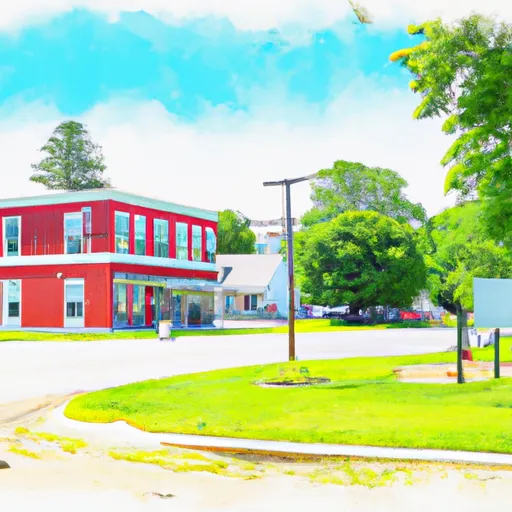-
 Snoflo Premium
Snoflo Premium
Get unlimited access to all our content
With no Ad interruptions! - Start Your Free Trial Login with existing account
Au-Gres
Eden Index
Climate
6.7
•
Recreation
3.1
•
Community
1.7
•
Safeguard
4.2/10

Au-Gres is a small city located in Arenac County, Michigan. The climate in this region is typical of the Midwest, with four distinct seasons. Summers are warm and humid, while winters are cold and snowy. The area is home to several lakes and streams, including the Au Gres River, Rifle River, and Saginaw Bay. Water quality is closely monitored, with a focus on reducing nutrient pollution and maintaining healthy aquatic ecosystems. Outdoor enthusiasts can enjoy activities such as fishing, boating, and hiking in nearby parks and nature reserves. The Au Gres River Water Trail is a popular destination for kayaking and canoeing, offering scenic views of the surrounding forest and wildlife habitats.
What is the Eden Index?
The Snoflo Eden Index serves as a comprehensive rating system for regions, evaluating their desirability through a holistic assessment of climate health, outdoor recreation opportunities, and natural disaster risk, acknowledging the profound impact of these factors on livability and well-being.
Climate Health Indicator (CHI): 6.7
Au-Gres receives approximately
783mm of rain per year,
with humidity levels near 82%
and air temperatures averaging around
8°C.
Au-Gres has a plant hardyness factor of
5, meaning
plants and agriculture in this region thrive during a short period during spring and early summer. Most
plants will die off during the colder winter months.
By considering the ideal temperature range, reliable water supplies, clean air, and stable seasonal rain or snowpacks, the Climate Health Indicator (CHI) underscores the significance of a healthy climate as the foundation for quality living.
A healthy climate is paramount for ensuring a high quality of life and livability in a region, fostering both physical well-being and environmental harmony. This can be characterized by ideal temperatures, reliable access to water supplies, clean air, and consistent seasonal rain or snowpacks.
Weather Forecast
Streamflow Conditions
Southwestern Lake Huron
Area Rivers
Southwestern Lake Huron
Snowpack Depths
Southwestern Lake Huron
Reservoir Storage Capacity
Southwestern Lake Huron
Groundwater Levels
Recreational Opportunity Index (ROI): 3.1
The Recreational Opportunity Index (ROI) recognizes the value of outdoor recreational options, such as parks, hiking trails, camping sites, and fishing spots, while acknowledging that climate plays a pivotal role in ensuring the comfort and consistency of these experiences.
Access to outdoor recreational opportunities, encompassing activities such as parks, hiking, camping, and fishing, is crucial for overall well-being, and the climate plays a pivotal role in enabling and enhancing these experiences, ensuring that individuals can engage in nature-based activities comfortably and consistently.
Camping Areas
| Campground | Campsites | Reservations | Toilets | Showers | Elevation |
|---|---|---|---|---|---|
| Groveland Oaks County Park | None | 963 ft | |||
| Bishop Lake - Brighton Rec Area | None | 901 ft | |||
| Camp Dearborn | 191 | 934 ft | |||
| Appleton Lake - Brighton Rec Area | None | 888 ft | |||
| Holly State Rec Area | 160 | 1,026 ft | |||
| Wayne County Fairgrounds RV | None | 691 ft | |||
| Proud Lake State Rec Area | 130 | 1,002 ft | |||
| Murray Lake - Brighton Rec Area | None | 875 ft | |||
| Pontiac Lake State Rec Area | 175 | 1,015 ft | |||
| Highland State Rec Area | 40 | 977 ft |
Nearby Ski Areas
Catastrophe Safeguard Index (CSI):
The Catastrophe Safeguard Index (CSI) recognizes that natural disaster risk, encompassing floods, fires, hurricanes, and tornadoes, can drastically affect safety and the overall appeal of an area.
The level of natural disaster risk in a region significantly affects safety and the overall livability, with climate change amplifying these risks by potentially increasing the frequency and intensity of events like floods, fires, hurricanes, and tornadoes, thereby posing substantial challenges to community resilience and well-being.
Community Resilience Indicator (CRI): 1.7
The Community Resilience Indicator (CRI) recognizes that education, healthcare, and socioeconomics are crucial to the well-being of a region. The CRI acknowledges the profound impact of these elements on residents' overall quality of life. By evaluating educational resources, healthcare accessibility, and economic inclusivity, the index captures the essential aspects that contribute to a thriving community, fostering resident satisfaction, equity, and social cohesion.

